And then these are our vegetables, those of our vegetable garden. Those we sowed or planted, watched grow, that we cared for. Only by that they are different from others.
The goal is not to encourage you to try to produce all the vegetables necessary for your family consumption, to transform you into a market gardener. As much as flowers, growing vegetables should remain a pleasure and not become an almost daily constraint.
Just grow plants that grow easily, requiring only limited maintenance and care. Know how to best use the space you have and also the time you can devote to your garden. You will be surprised by the amount of vegetables that can be harvested in a small space.
Here are the vegetables par excellence of the garden of the amateur: artichoke, carrot, chicory, gherkin, bean, beans eat everything, lettuce, lamb's lettuce, melon, leek, radish, scorzonera and tomato.
Add herbs: garlic, chervil, scallions, chives, shallot, tarragon, onion, parsley, rosemary, savory and thyme. If you have room, add asparagus, cabbage, early potatoes, etc.
Do not try to have a complete kitchen garden in the first year. "Doing" vegetables requires some experience. Do not run to failure seeing at once too big. Note that, in general, vegetables are demanding plants that require a lot of light, heat, water and fertilizer.
The location
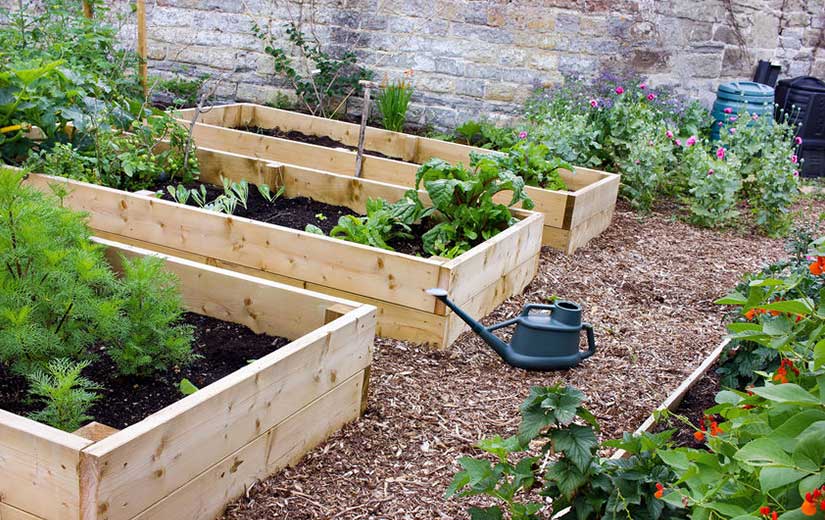
A kitchen garden must be close to the dwelling. You must be able to go there frequently, if not every day, at least two or three times a week. Otherwise, the cultivation of certain vegetables, especially those that require copious and regular watering, becomes difficult or even impossible.
If you have the choice of terrain, avoid:
- the proximity of a high wall or tall trees shading the flower beds part of the day. Trees have another drawback: their roots invade the soil and make it unsuitable for any crop, especially root vegetables.
- a land that conserves surface water for a long time after the rain.
- a steep slope difficult to convert.
- a cold, damp valley floor where spring frosts are particularly prevalent.
- a very sunny, stuffy place, where most vegetables suffer from heat.
On the other hand, perfectly suits a field:
- flat or slightly sloping south, southwest or southeast;
- protected from the north and prevailing winds.
The exhibition
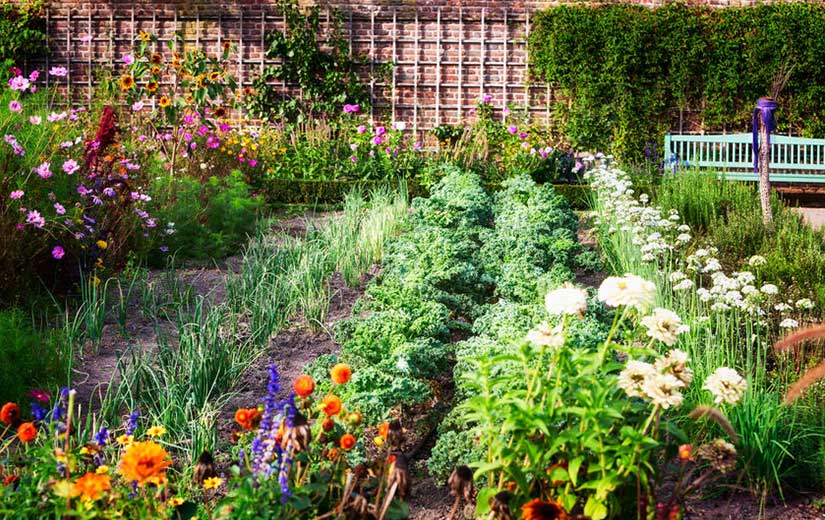
Southwest is the best exposure for a vegetable garden. This is where vegetables come best. They have enough sun, are sheltered from northern winds and are less likely to be affected by spring frosts.
At southern exposure, put the plants demanding a lot of heat. Install a coastal for scoop.
At eastern exposure, spring frosts cause more damage than elsewhere. This is where the first morning rays of the sun dart, bringing a rapid thaw particularly harmful to plants. Do not put sensitive plants.
At western exposure, plants suffer the least from spring frosts. They usually receive more rain. It is an excellent place for summer culture.
At the north, do not count on a good success with the exception of some vegetables with fast vegetation, in full summer.
Floor
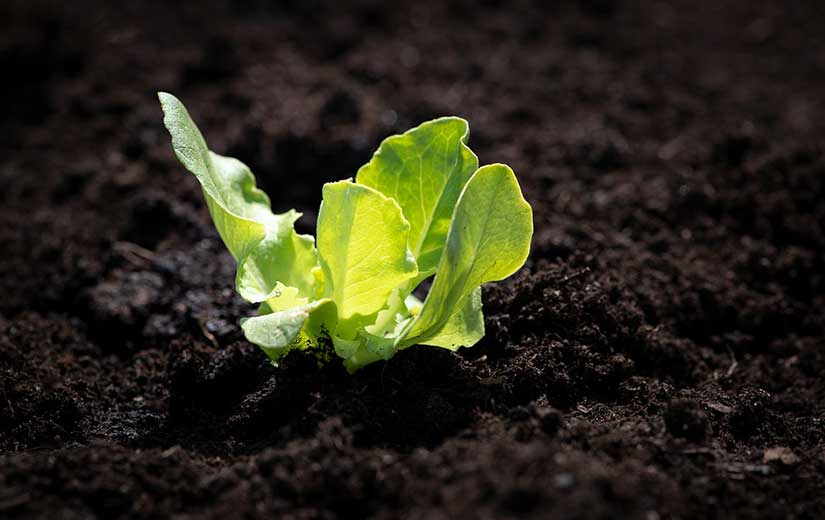
Without going so far as to say that any land is suitable for a kitchen garden, it must be emphasized that this factor has much less importance, initially, than for other crops, especially that of fruit trees.
Vegetable plants do not excavate the soil very deeply. Their roots are usually only about twenty centimeters thick, some 30 to 40 cm thick, and rarely more. It is therefore possible to modify and improve the soil on a small surface without great difficulty or considerable expense. You can also make this transformation gradually, over several years, by contenting you, initially, to make some flower beds for the most demanding vegetables.
Only are difficult to develop very wet soils that require major drainage works, and those with really too much stone.
You must be able to obtain a light soil, rich in humus, easy to work, this famous garden soil where all the plants, or almost, grow perfectly. The two main amendments to improve a kitchen garden are: sand and humus in all its forms.
While waiting to be able to correct your soil, if necessary, it is good that you know the vegetables which will grow there appropriately or not, according to its nature.
- Do not like acid soils : garlic, celery, cabbage, lettuce and onion.
- Support acidic soils : artichoke, asparagus, carrot, sorrel, peas, potatoes, radishes and tomatoes.
- Do not like very calcareous soils : artichoke, sorrel, asparagus, peas and potatoes.
- Come in limestone soils : garlic, beetroot, celery, chicory, cabbage, cucumber, gherkin, spinach, lettuce, onion, leek and tetragon.
The scope
It is often asked what extent a garden should have. No figures can be advanced. It all depends on what you want to cultivate. On 100 square meters only it is possible to obtain an almost permanent production of fresh vegetables all the year round.
The layout

The vegetable garden must be accessible at all times, if only for the harvest. Plan walkable walkways in any weather, including in the middle of winter. If in the garden of approval it is necessary to avoid the alleys cemented or asphalted, it is not the same with the kitchen garden. Some paths of this kind, or at least one main alley, where you can always walk on dry feet, are perfectly conceived.
You must be able to go with a wheelbarrow or a motorized vehicle in the main aisle the width must be between 60 cm and 1 m. Provide a clearance to drop the fertilizer bags, tools, etc., and even a shelter if your garden does not touch your home.
For secondary aisles, especially those separating the flowerbeds, do you simply use 20 to 30 cm wide, sandblasted or covered with a thin layer of peat to avoid carrying too much soil after the shoes. Their location is also regularly dug and can vary each year.
The beds are established according to the needs of the crops. A width of one meter to 1,20m is generally suitable. You must be able to plant or harvest in the middle without having to put your feet on the ground.
Fence your garden
It is essential, not so much against thieves, but to prevent animals from entering (especially dogs) that may cause significant damage.
The ideal is a wall of about fifty centimeters in height, topped with a fence. Avoid the hedge, especially in a small vegetable garden. The roots of shrubs spread rapidly in the soil. They deplete it and make it unusable over a large width. In addition, the hedge is a refuge for many pests, including slugs and some insects.
You will also like >> How to get rid of ants in the garden?
Wind and windbreaks
In many areas, the wind is violent. II is a formidable opponent of cultures. Not all vegetable plants are so sensitive to its action. If it has little hold on the low plants, on the other hand it can overturn tomato feet, for example. In addition, it dries the soil, hinders the development of young shoots and burns seedlings just out of the ground.
When possible, setting up a vegetable garden under the shelter of a house (located on the prevailing wind side) is the right solution. Otherwise, especially if you are in a country where the wind is strong, you must establish a barrier between him and the plants.
Various windbreaks can be made using a wall, branches, canes de Provence, etc. Do not use shrubby hedge for a small garden.
There are also very practical windbreaks that consist of a fine mesh plastic mesh. They provide good protection by breaking the wind. They have the advantage of being easily installed for momentary protection and then removed for reuse in another place or time.
Water and watering
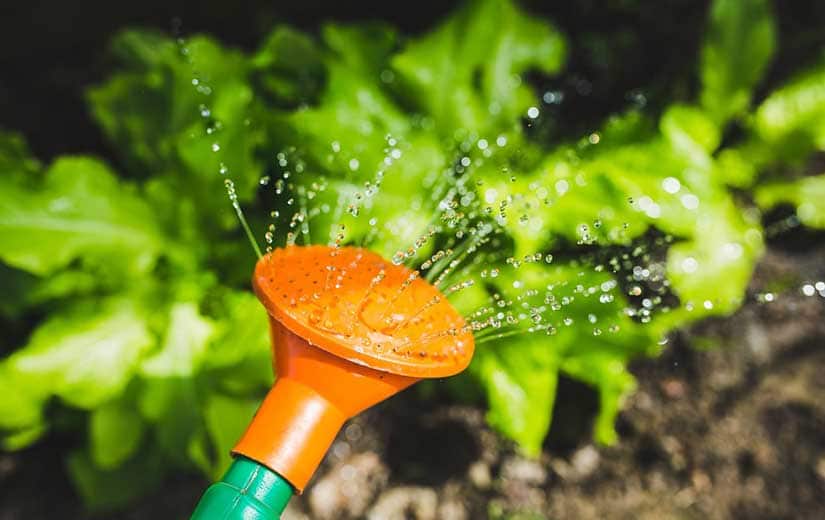
Do not expect to harvest good and beautiful vegetables (with very few exceptions) if you can not water. Vegetables must never run out of water. It is an essential condition for their rapid growth and quality.
As much as possible, make an installation with water points avoiding the use of long lengths of pipe to unroll on the ground.
We water in two ways : by letting the water run on the ground at the foot of the plants, and in rain; or, if you prefer, by pouring the water at the mouth of the watering can, or by putting the apple.
Water the seedlings, as well as the plants that support it or rain, such as: radishes, carrots, beets, leeks and spinach.
On the other hand, for others, it is better to avoid wetting the foliage or the fruits so as not to favor rot or certain diseases. This is the case, in particular, tomatoes, potatoes, cucumbers and pickles. Some plants accept both methods perfectly.
You will like to read >> Watering your garden: all automatic watering systems
Ripping and digging
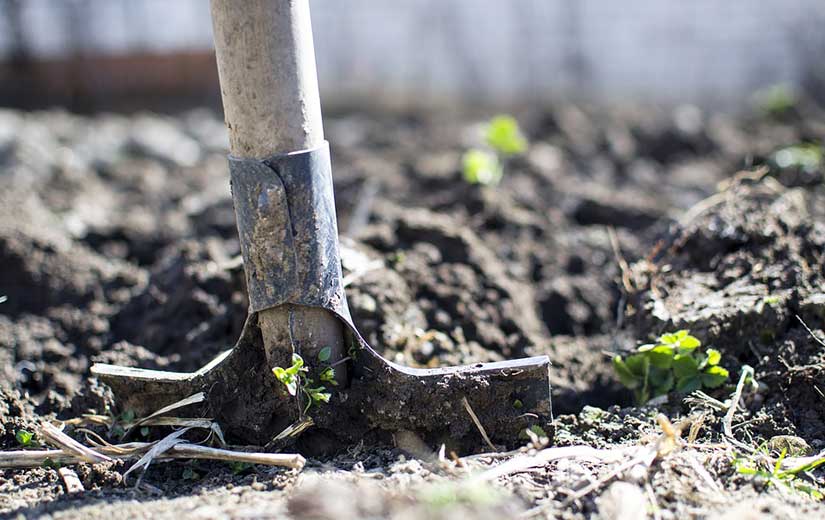
Only in a properly prepared soil that vegetables succeed. To sow or plant in a land that has not received useful care is to go to near failure or at least to poor results.
The first digging to be done when establishing a vegetable garden is actually a rummage because it concerns the soil on a considerable depth, about 50 cm. It helps rid the earth of roots of perennial weeds (bindweeds, thistles, brambles, nettles, etc.) and stones.
The sinking is a double gauge digging.
Operate so as not to mix the bottom soil and the surface soil. Generally it is done using a spade or fork. The first tool is suitable for light soils, fairly friable and not very stony. The second is to be preferred in heavy and compact soils. In areas infested with roots, it is better to use the fork. The spade cuts the roots into many fragments that are more difficult to remove. This work can be done at any time, when the terrain is passable, it is neither too wet nor too dry. A well done wrenching is valid for many years. It only needs to be redone when the soil is overgrown with perennial weeds or water is flowing badly, which implies a subsidence of the subsoil that needs to be aerated.
The digging loosens the soil on a thickness from 20 to 30 cm, the length of a spade iron about.
It is preferably done in late fall or early winterevery year as soon as the flower beds are empty. Practice a large clump digging, without breaking the soil, which allows the maximum effects of atmospheric agents, especially the action of freezing and thawing in the soil. The clumps are broken and the earth becomes friable. A simple scratching at the end of winter is enough to equalize the flowerbeds and make them suitable for receiving seedlings or plantations.
Spade when the soil does not stick to the tool (spade or fork). In soil that is too wet, you do a bad job. The most practical and least painful way to return the soil of a garden is to proceed in strips of 1.50 to 2 m wider. Initially, dig a small trench (gauge gardener language) about thirty centimeters deep about forty centimeters wide and 1.50 to 2 meters in length. Transport the land from the gauge to where the digging ends.
Using a spade or fork, take a slice of soil from 10 to 15 cm thick, depending on your strength and the consistency of the soil, on the wall of the gauge. Throw this land upside down on the other side of the gauge. Continue on the length of the gauge, then successively on all the digging part. At the end, fill the hole with the earth you brought to this place when you dug the gauge.
Ripping, like digging, is the best time to bring soil amendments: sand, humus, etc., which are intimately mixed with the soil.
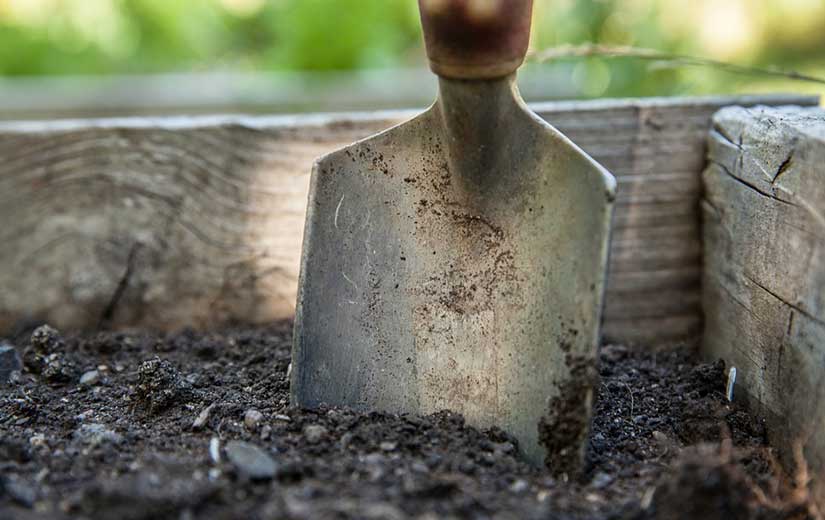
Every year, it is useful to add humus (in soils that need it) and a slow-acting fertilizer suitable for all crops. This is called bottom manure, to be supplemented eventually, during vegetation, by a quick-acting fertilizer. Of course, if you have established a precise plan of use for each part of your land, you can choose a fertilizer corresponding more precisely to the needs of the plant that will be put there.
From time to time, put lime. This operation, called liming, avoids the acidification of the soil, especially on the surface under the influence of various factors, including the contribution of soil. You can easily measure the acidity of the earth using small devices' testers
of the ground ".
Spread the limestone amendment (slaked lime, crushed limestone, marl, etc.) over the entire soil and bury it, when digging, before winter.
In general, it is useful to to lime every three years in light soils, every five years in heavy land. The amount of lime to be supplied is of the order of 100 to 200 grams per square meter.
For tillage, you can use a spade or fork. You can also use a so-called automatic spade that reduces fatigue, and also a tiller.
To read also >> Gardening tool: the 20 indispensable tools
Humus and soil

The soil of the garden, and even more that of the garden, must be abundantly provided with humus, a crucial element of its good fertility. In land that has little or no land, many vegetables grow with difficulty and are of poor quality.
Humus, a pulverulent black substance, comes from the decomposition of organic matter of vegetable origin. It lightenes the soil and makes it more favorable for root development. It stores the water and fixes the fertilizing elements brought by the fertilizers. It neutralizes soils that are too calcareous. The contributions of humus are particularly indispensable in gardens created from scratch around new constructions.
The soil, made of embankments of all kinds, is often almost completely lacking.
The main source of humus was for a long time the farm manure. It has become rare. Storage and use are not always easy. In any case, use it only reduced to the state of potting soil. Fresh, it never gives good results in the immediate future. In addition, it often contains disease germs and weed seeds.
Make humus by composting household waste and crop waste. Proceed as follows:
- choose an isolated location preferably concealed in some way, especially by shrubs. Even out the floor
- Allow enough space in order to build two piles.
- Gather all the garbage from home and garden : peelings, withered flowers, weeds, grass clippings, vegetable debris, straws, leaves, sifted ashes, etc. Also put newspapers (in limited quantity), rags, sawdust, poultry manure … It is to be rejected only what remains rot or takes too long to disintegrate, as well as what risks attracting pests (rotten or rotten fruits, diseased leaves, weeds whose seeds are ripe, etc.).
- Arrange in successive layers well packed, moistened and covered with a thin layer of soil. Add a special product (found at grain dealers) that speeds up fermentation while enriching compost, or sulphate of ammonia. When the pile is sufficient (2 m x 1 m on the ground and 1 m in height approximately), make a new one. Ensure good humidity and let the transformation take place. You can cover the pile with a sheet of plastic held around by a few shovels of earth. This prevents waste from being scattered by animals or wind. In addition, decomposition is faster.
- Change the pile of space two or three times (about every 3 months), mixing well. In one year, we obtain an excellent potting soil (a real artificial manure, to use a common term), usable as well in the vegetable garden as in all parts of the garden, in particular on the lawn.
If you do not have the possibility to manufacture this artificial manure, you can use a humic amendment proposed in the trade under various names: concentrated manure, humus more or less special, soil improvers, etc. Doses and directions for use are indicated by the manufacturer. Ordinary or enriched peat is also an excellent source of humus. It is particularly indicated for improving soils with high limestone.
To read also >> Marc de café: how to use it in the garden?
The distribution of crops
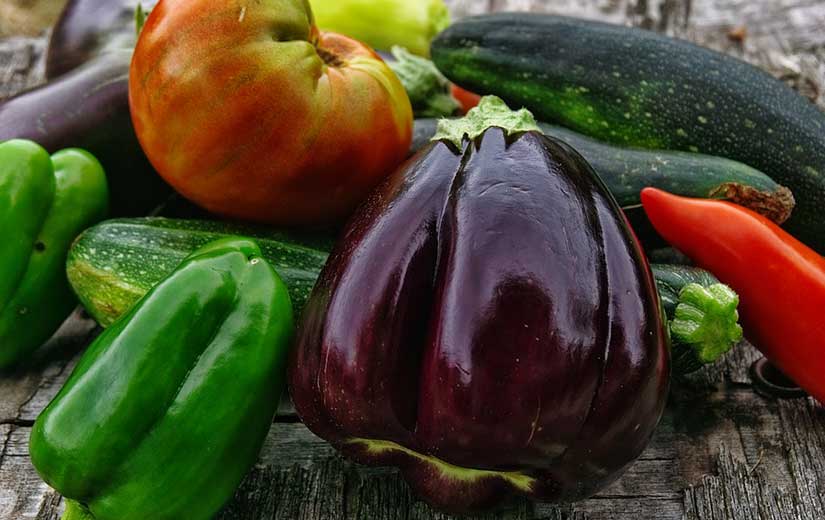
Establish a vegetable growing program based on: what you want to harvest; dimensions of your garden; a rotation in the occupation of the flowerbeds so that the same category of vegetables does not return constantly to the same location.
The rotation of crops, or rotation, avoids the impoverishment of the soil in certain elements. Each plant consumes, in fact, more or less one or other of the fertilizing elements (nitrogen, phosphoric acid, potash, etc.).
On the other hand, the change of culture prevents or hinders the multiplication of pests (insects and diseases). This practice is therefore beneficial in two respects: reducing fertilizer requirements and reducing the need for soil treatments against pests.
Of course in a small garden, it is not always easy to respect a rigorous plan of rotation. However, try to consider the following rules:
- After a superficial root plant, put a deep-rooting plant, and vice versa.
- After a demanding plant in nitrogen (leaf vegetables), put a demanding plant in phosphoric acid (root vegetables), then a demanding plant in potash (fruit vegetables), etc.
- After a voracious plant, put a frugal plant.
- Avoid succeeding two closely related plants or having common enemies.
- Can follow, for example: leek, beans and potatoes; carrot, lettuce and cabbage; tomato, cabbage and carrot; spinach, potato and cabbage; beet, lettuce and radish. To avoid against: lettuce after chicory, cucumber after melon, leek after onion, carrot after celery, radish after turnip.
- When a plant has been infected with a disease or an insect (eg, leek), do not return the species to the same site for several years. In the case of a particularly important attack, it is even in your interest to give up a vegetable for a time and not to resume cultivation until the pest has perished. The latter, in fact, proliferates all the more as it finds its favorite food. If it is deprived of it, it eliminates itself or at least loses its virulence.








